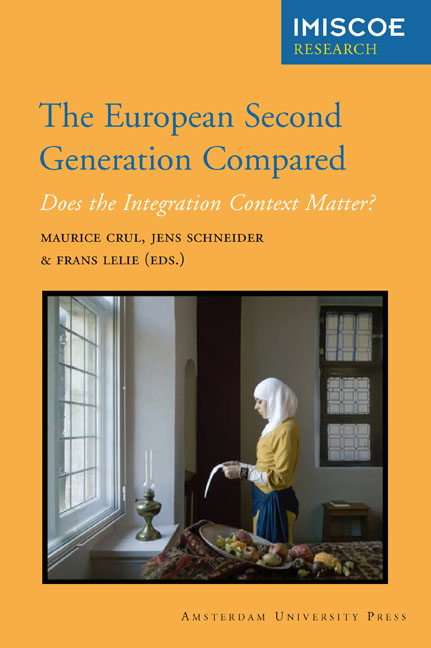Book contents
- Frontmatter
- Contents
- Acknowledgements
- 1 Introduction
- 2 Comparative Integration Context Theory: Participation and Belonging in Diverse European Cities
- 3 Research Methodology
- 4 The TIES Respondents and their Parents: Background Socio-Demographic Characteristics
- 5 School Careers Of Second-Generation Youth in Europe: Which Education Systems Provide the best Chances for Success?
- 6 Assessing the Labour Market Position and Its Determinants for the Second Generation
- 7 Union Formation and Partner Choice
- 8 Identities: Urban Belonging and Intercultural Relations
- 9 Ways of ‘being Muslim’: Religious Identities of Second-Generation Turks
- 10 Conclusions and Implications: The Integration Context Matters
- List of Contributors
- Other IMISCOE titles
4 - The TIES Respondents and their Parents: Background Socio-Demographic Characteristics
Published online by Cambridge University Press: 09 January 2021
- Frontmatter
- Contents
- Acknowledgements
- 1 Introduction
- 2 Comparative Integration Context Theory: Participation and Belonging in Diverse European Cities
- 3 Research Methodology
- 4 The TIES Respondents and their Parents: Background Socio-Demographic Characteristics
- 5 School Careers Of Second-Generation Youth in Europe: Which Education Systems Provide the best Chances for Success?
- 6 Assessing the Labour Market Position and Its Determinants for the Second Generation
- 7 Union Formation and Partner Choice
- 8 Identities: Urban Belonging and Intercultural Relations
- 9 Ways of ‘being Muslim’: Religious Identities of Second-Generation Turks
- 10 Conclusions and Implications: The Integration Context Matters
- List of Contributors
- Other IMISCOE titles
Summary
Introduction
As the TIES project has affirmed, socio-demographic characteristics of migrants and their descendants across Europe vary greatly. We see this both in terms of individuals as well as their families. Our survey has also revealed such differences among respondents who share common ethnonational origins. The aim of this chapter is to give a first descriptive overview of all TIES respondents – including the comparison groups – detailing their age, citizenship status, household composition alongside pertinent socio-demographic information about their parents. We describe here to what extent parental characteristics of second-generation respondents may diverge from their respective cities’ comparison groups. A particular comparative focus on second-generation Turks across countries is reflected in this chapter, as it is elsewhere in this volume, because this group is numerically and visibly present in seven of the eight participating survey countries and thus forms a substantial part of our overall sample. For this reason, a separate paragraph under each theme is dedicated to information specifically about them and their parents.
The first section examines select demographic characteristics of our respondents themselves. The second section focuses on their parents.
Respondents’ socio-demographic characteristics
Age distribution
Immigration patterns vary across receiving countries and immigrant groups. Naturally, this has resulted in varied waves of migration and different immigration peak periods. This also affects age distribution patterns among second-generation respondents from diverse origins. We contend that age is an important factor when studying the timing – and for that matter, mere presence – of crucial life course transitions, such as entry into the labour market and union formation. Figures 4.1a through 4.1o show the mean age and confidence intervals of the TIES respondents at the city level, separated by gender.
The figures show that age gaps exist between comparison and second-generation groups in almost all cities, with the latter being, on average, younger than the former. We can attribute this to the relatively recent arrival of the second generation's parents in most countries and the fact that, according to our definition anyway, the second generation is necessarily born in the survey country. To illustrate with an example, if a Turkish or a Moroccan mother arrived in the survey country in 1980, her first locally born child could have been, at most, 28 years old during the survey.
- Type
- Chapter
- Information
- European Second Generation ComparedDoes the Integration Context Matter?, pp. 57 - 100Publisher: Amsterdam University PressPrint publication year: 2013



